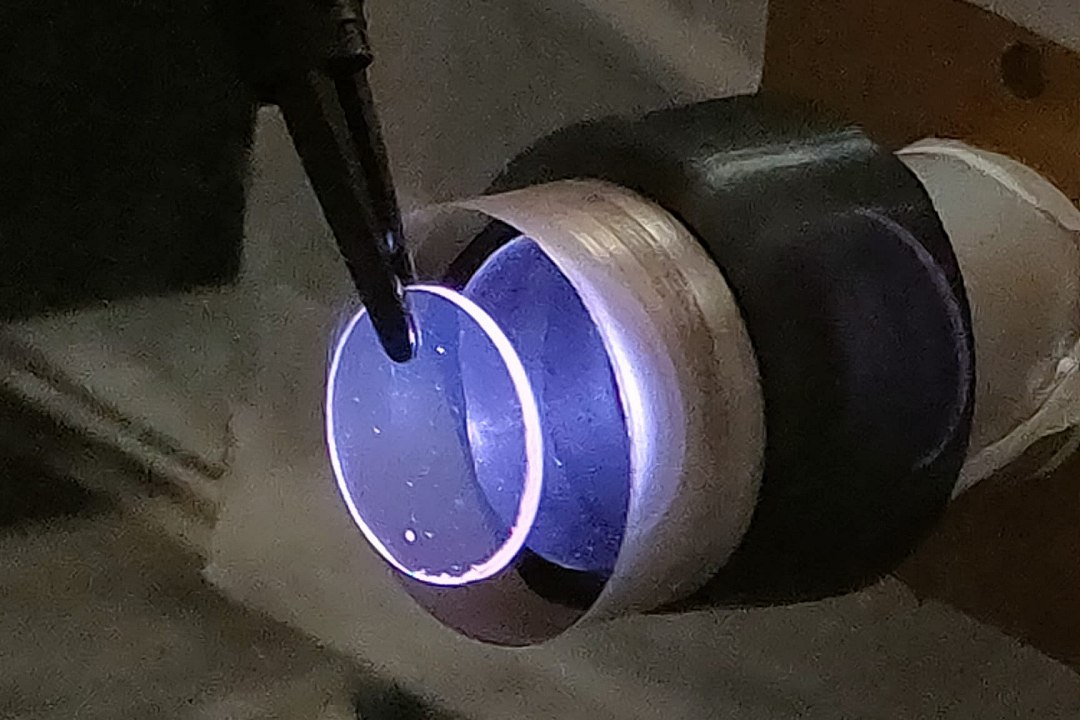TECH

Storage density... The binary 0s and 1s in a computer's memory are typically transistors operating at low or high voltage. On a compact disc, a 1 is a point where a small "well" turns into a flat "ground" or vice versa, while a 0 is where there is no change.
So historically, the storage density of any digital memory device has been limited by the smallest possible size with which the object representing the 0s and 1s can be built - and, whether transistors, magnetic domains or optical points, each of these bits has an almost uncountable number of atoms.
But that could now change very quickly, taking bits directly to the atomic scale, where each 0 and each 1 will be represented by a single atom.
And the person behind this leap in miniaturization is the Brazilian Leonardo França, currently at the University of Chicago, in the USA.
Crystal defects... Leonardo has perfected a technique for creating 0s and 1s from defects inside crystals, each of which is the size of a single atom. And while it has entered the realm largely controlled by quantum mechanics, the innovation is still ideal for classical applications in computer memory.
"We have found a way to integrate solid-state physics applied to radiation dosimetry with a research group that works heavily in quantum, although our work is not exactly quantum," Leonardo said. "There is a demand for people who are doing research in quantum systems, but at the same time there is a demand to improve the storage capacity of classical non-volatile memories. And it is at this interface between quantum and optical data storage that our work is based."
"It is impossible to find crystals - in nature or artificial - that do not have defects. So what we are doing is taking advantage of these defects," Leonardo added.
Atomic bit... In essence, in this new approach, each bit is represented by a missing atom in the crystal lattice of the material used to build the memory.
To read and write these defects, Leonardo used radiation dosimeters, devices most commonly used to detect the amount of radiation that hospital workers absorb from X-ray machines. He had this idea while still at USP (University of São Paulo), but now he has started using the dosimeters to create a microelectronic memory storage system.
"In hospitals and particle accelerators, for example, it is necessary to monitor the amount of radiation dose to which people are exposed," he explained. "There are some materials that have this capacity to absorb radiation and store this information for a certain period of time."
The trick is to replace the radiation with an optical technique - a pulse of light - that also does the same job, "activating" the bit in the crystal defect or erasing it.
Quantum inspiration, classical memory... To create the new memory storage technique, the team added rare earth ions, a group of elements also known as lanthanides, to a crystal. Specifically, they used a rare earth element called praseodymium and a crystal of yttrium oxide, but the process can be used with a variety of materials, taking advantage of the strong and flexible optical properties of rare earths. "It is well known that rare earths exhibit specific electronic transitions, which allow us to choose specific laser excitation wavelengths for optical control, from the UV to the near-infrared regimes," Leonardo explained. Unlike dosimeters, which are typically activated by X-rays or gamma rays, the storage device is activated by a simple ultraviolet laser. The laser excites the lanthanide atoms, which in turn release electrons. The electrons are trapped by some of the defects in the oxide crystal, for example by individual holes (positive charges) in the lattice where a single oxygen atom should be but isn’t.
While these crystal defects are often used in quantum research, entangled to create qubits in diamond and, more recently, in the semi-precious stone spinel, the team found another use for them. Radiation dosimeters allow them to tell when the defects are charged and when they are not. By designating a charged hole as a 1 and an uncharged hole as a 0, the crystal has been transformed into a powerful memory storage device on a scale never seen in classical computing.
“Within this millimetre-sized cube, we have demonstrated that there are at least a billion of these memories – classical memories, traditional memories – based on atoms,” said Professor Tian Zhong, who led the research.
Bibliography--Article: All-optical control of charge-trapping defects in rare-earth doped oxides
Authors: Leonardo V. S. França, Shaan Doshi, Haitao Zhang, Tian Zhong
Journal: Nanophotonics


No comments:
Post a Comment